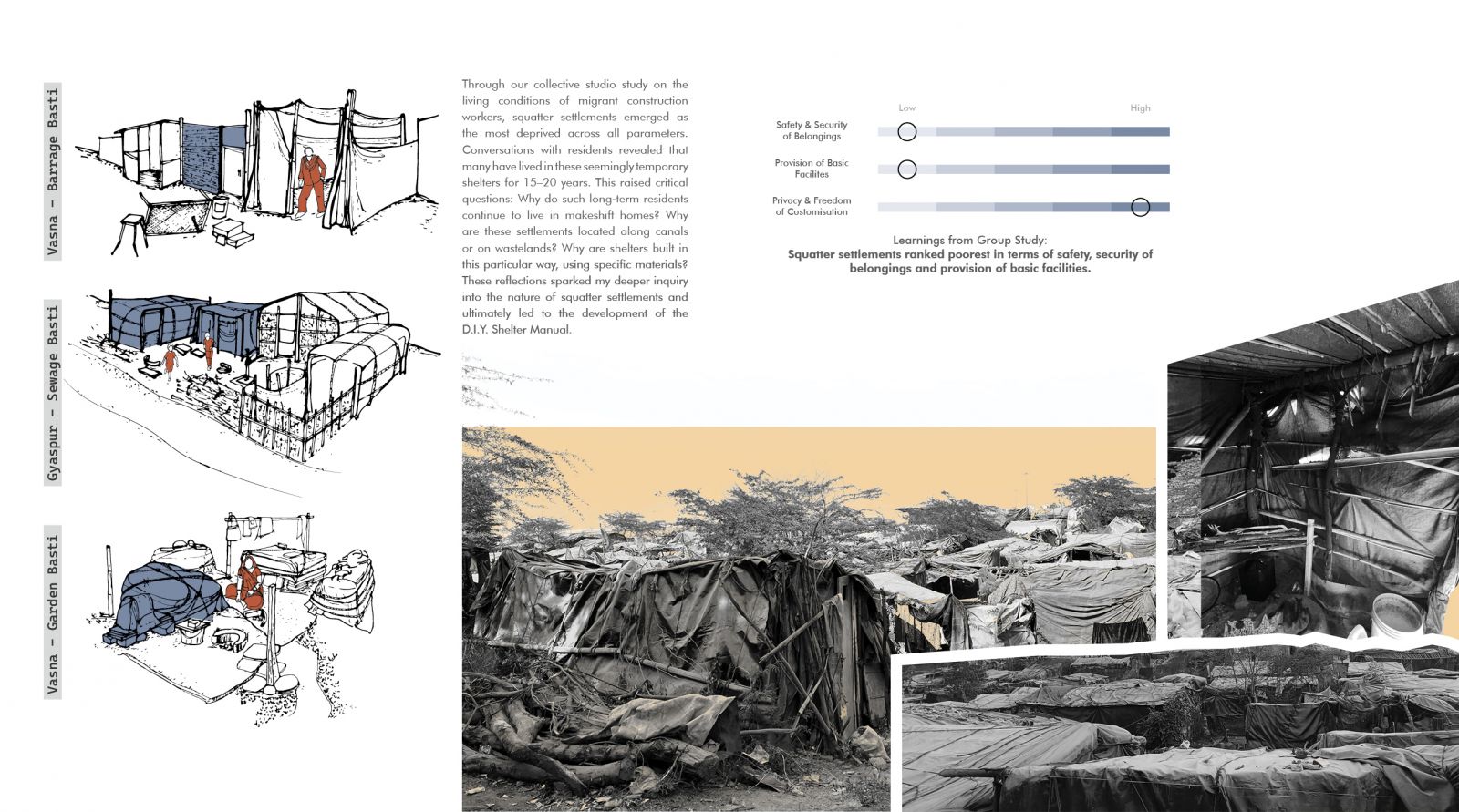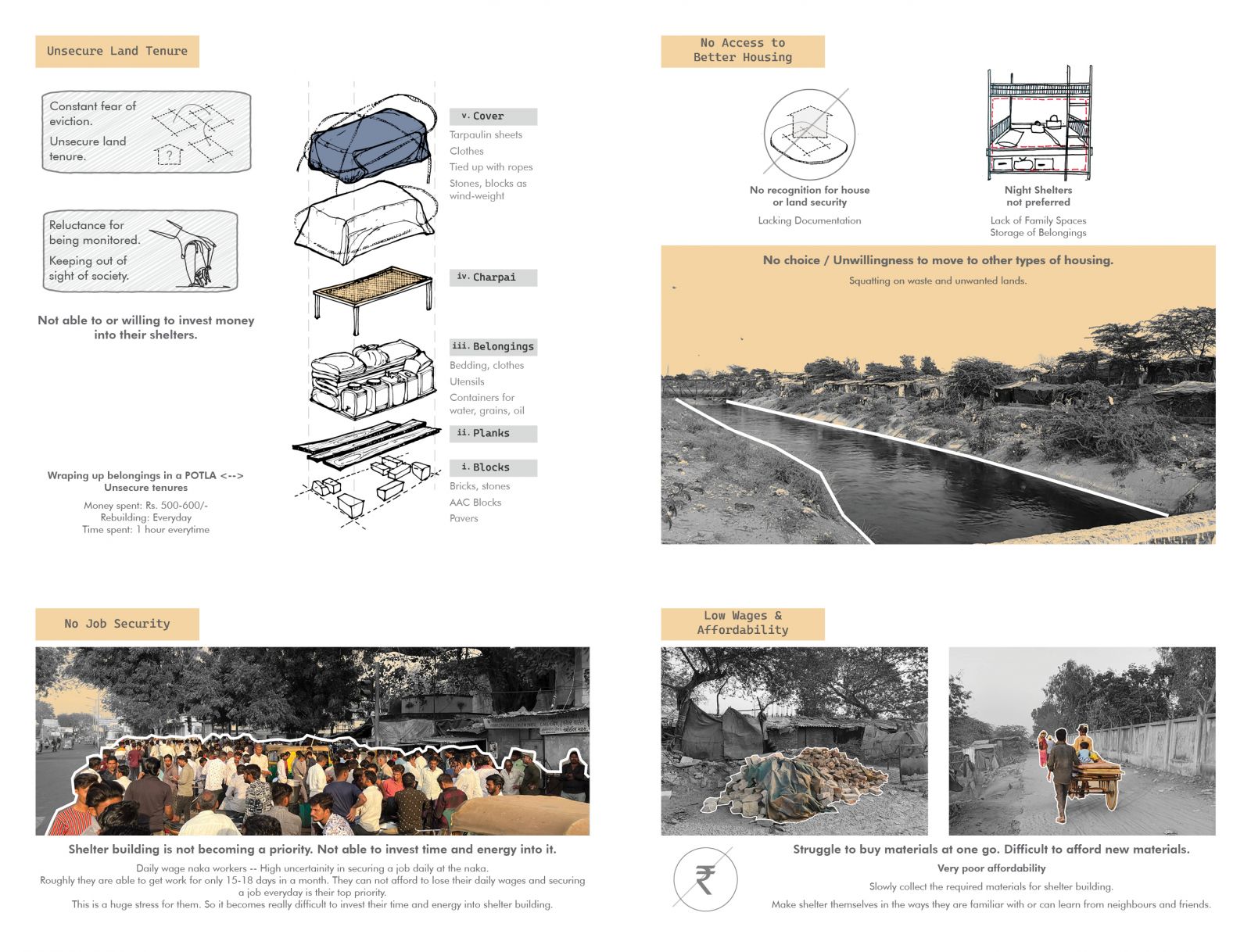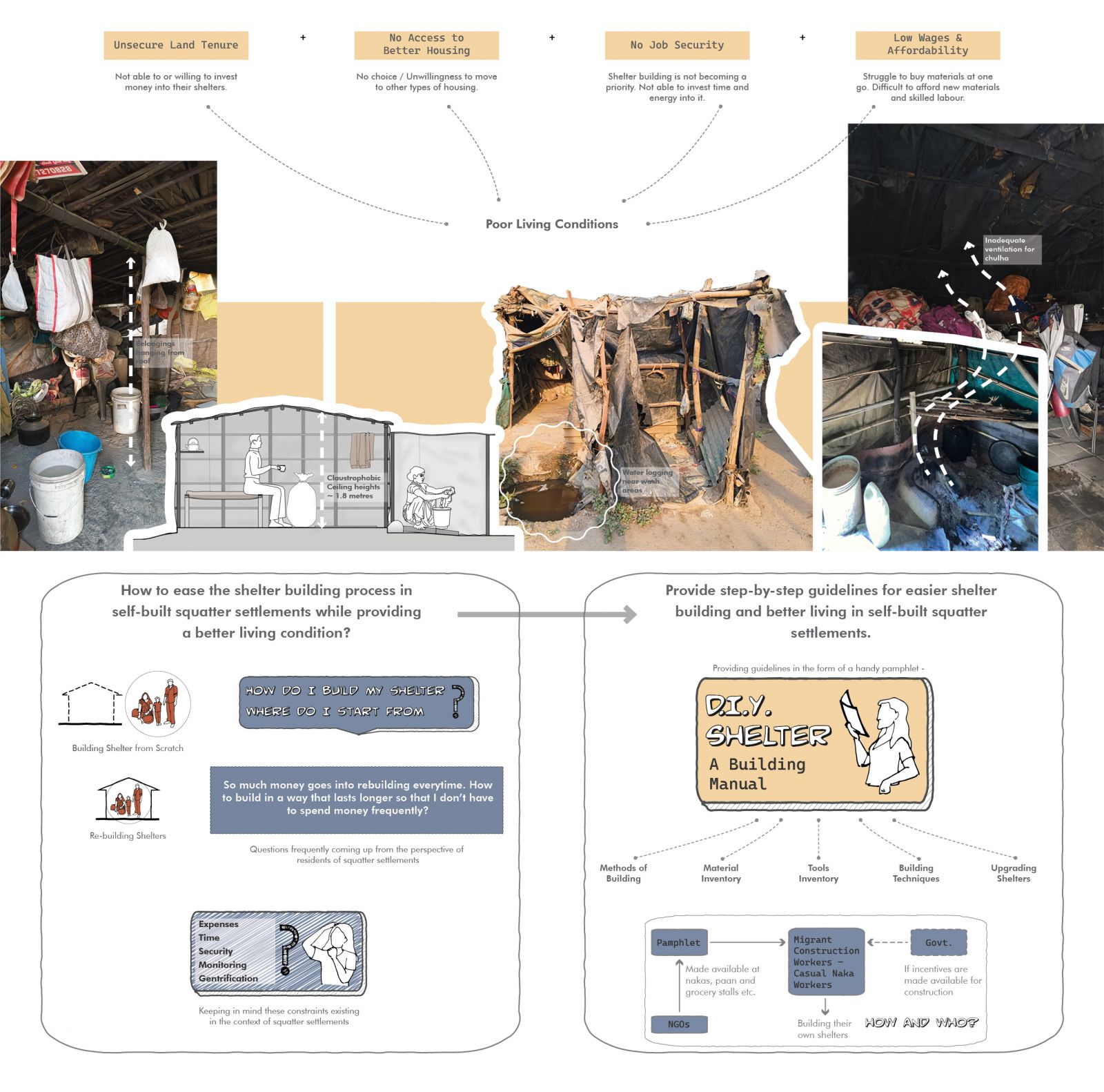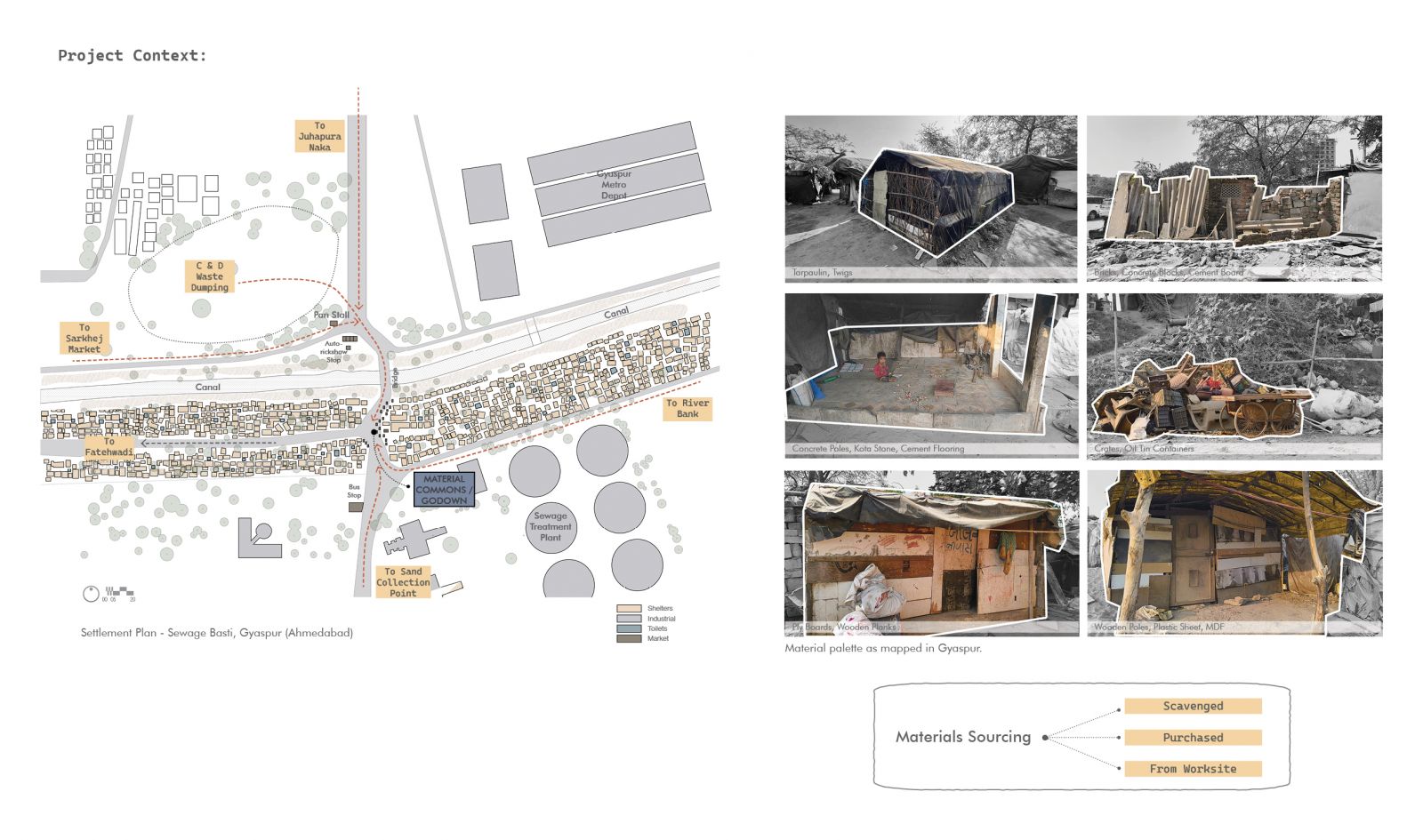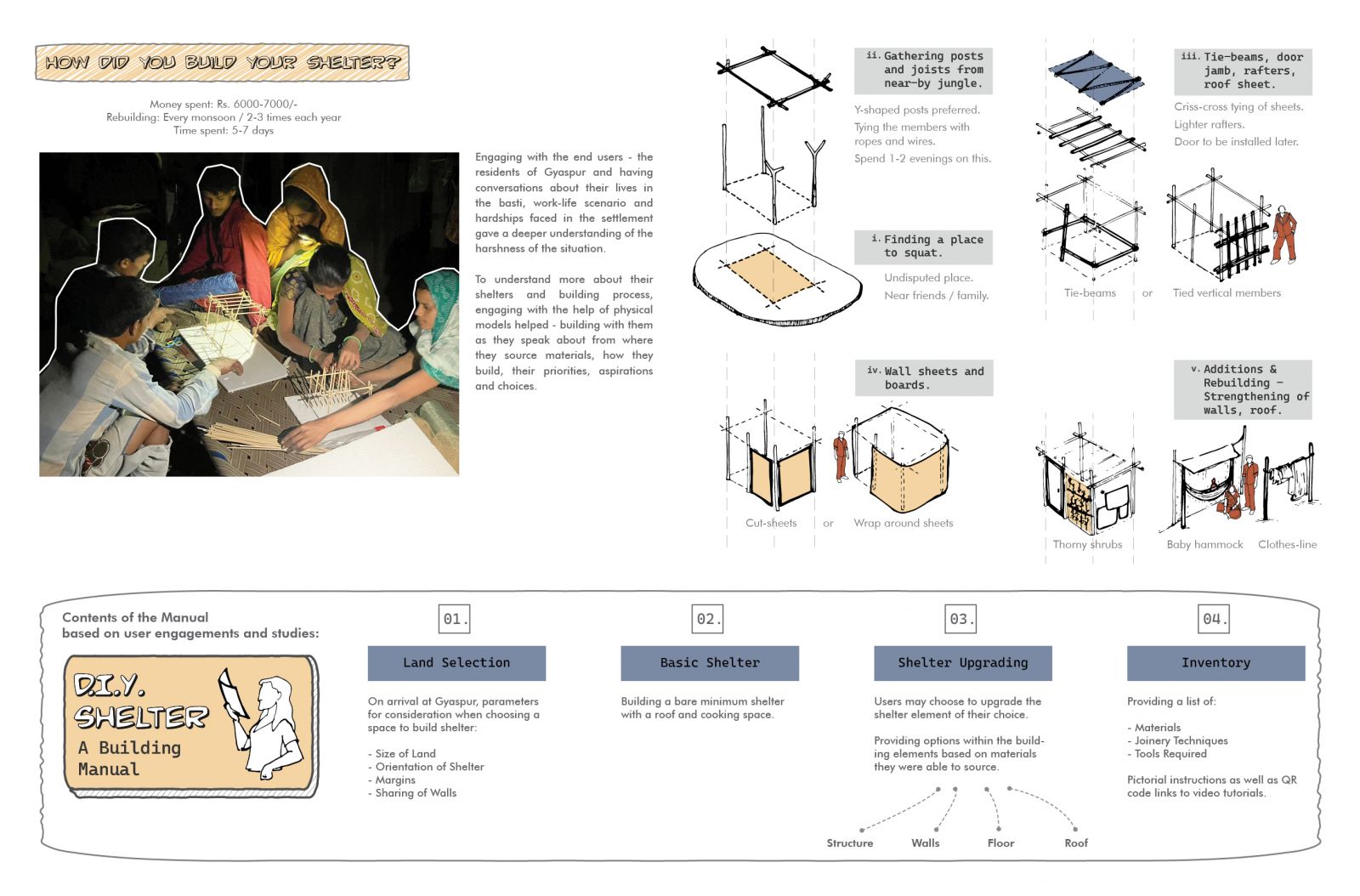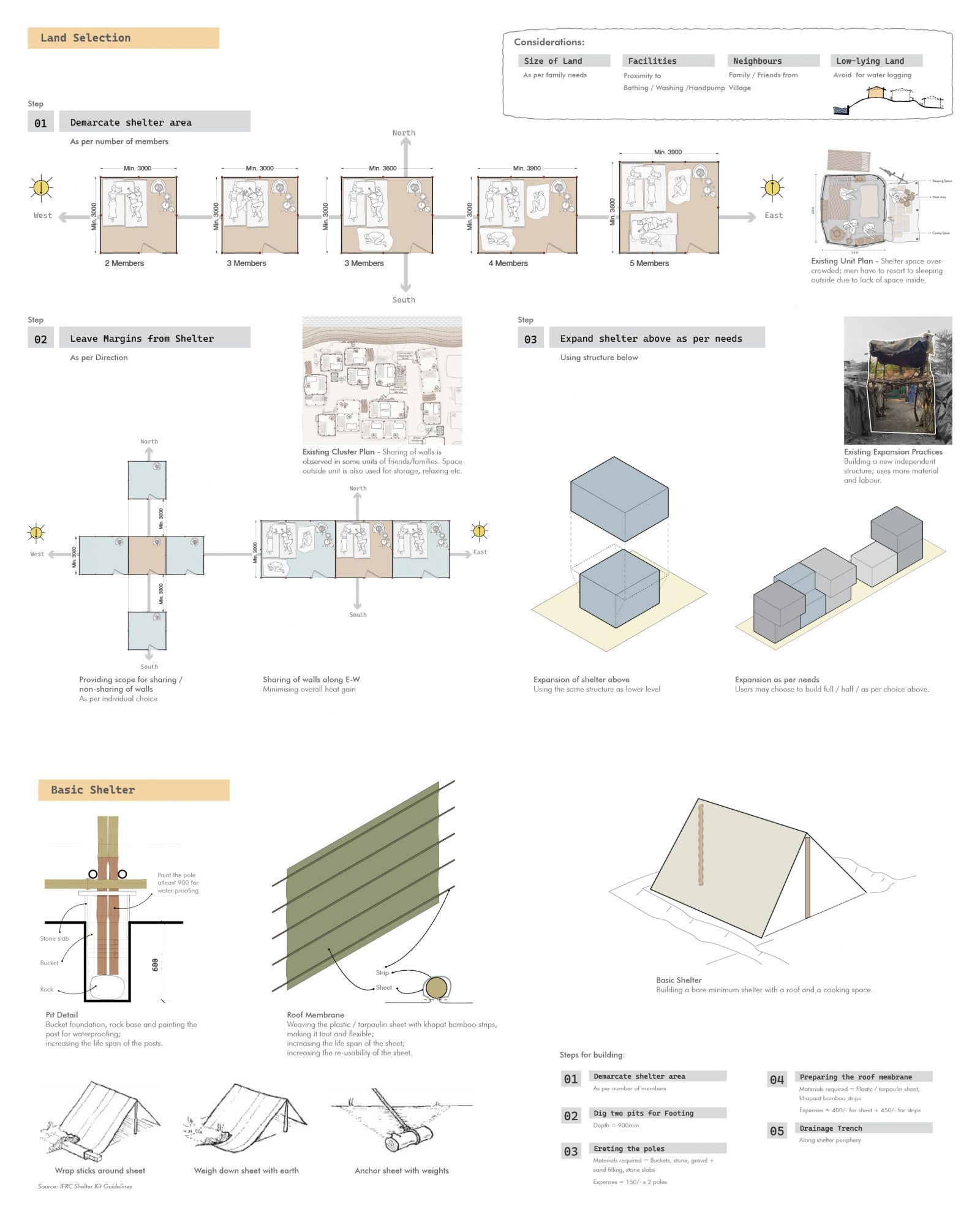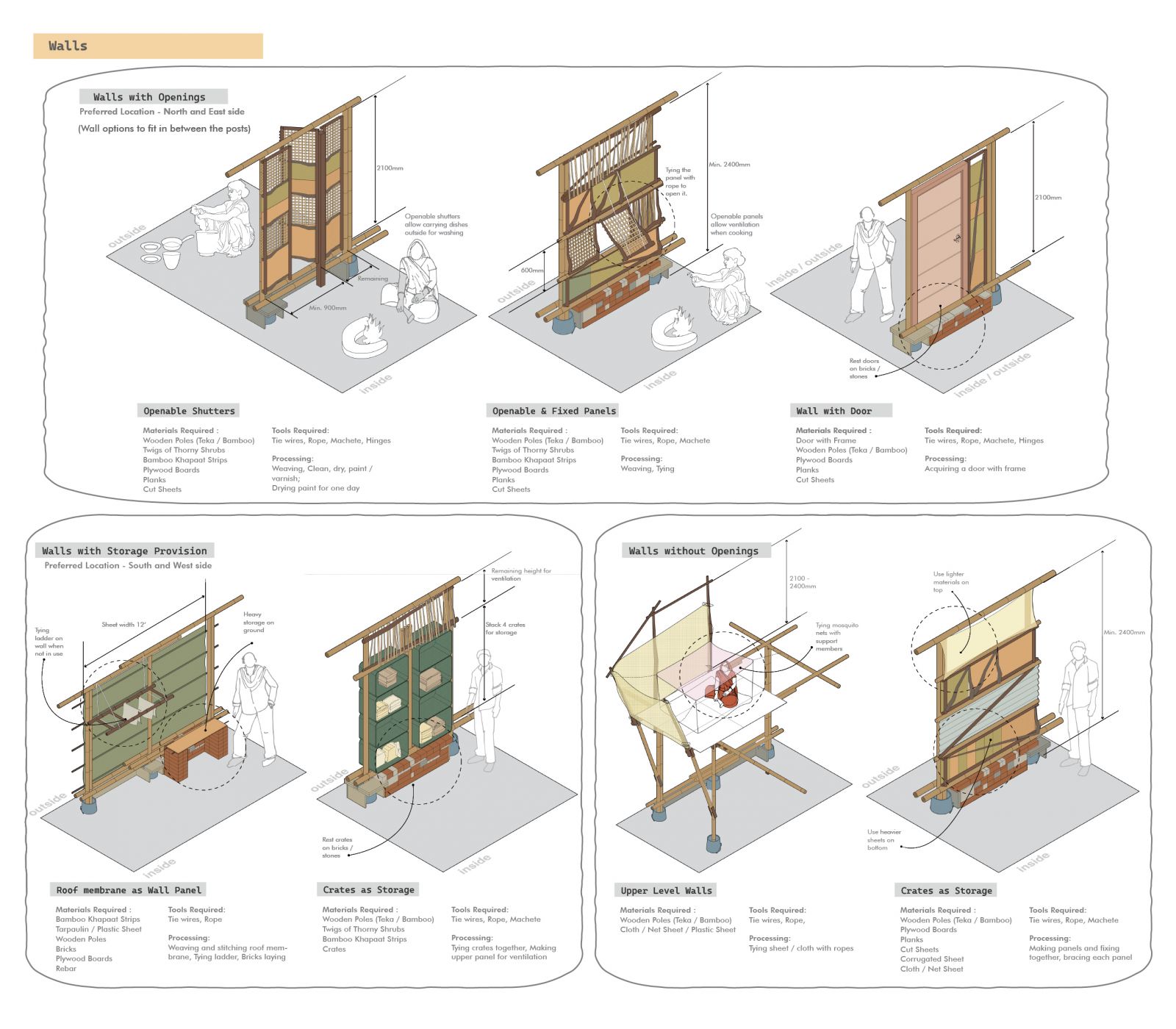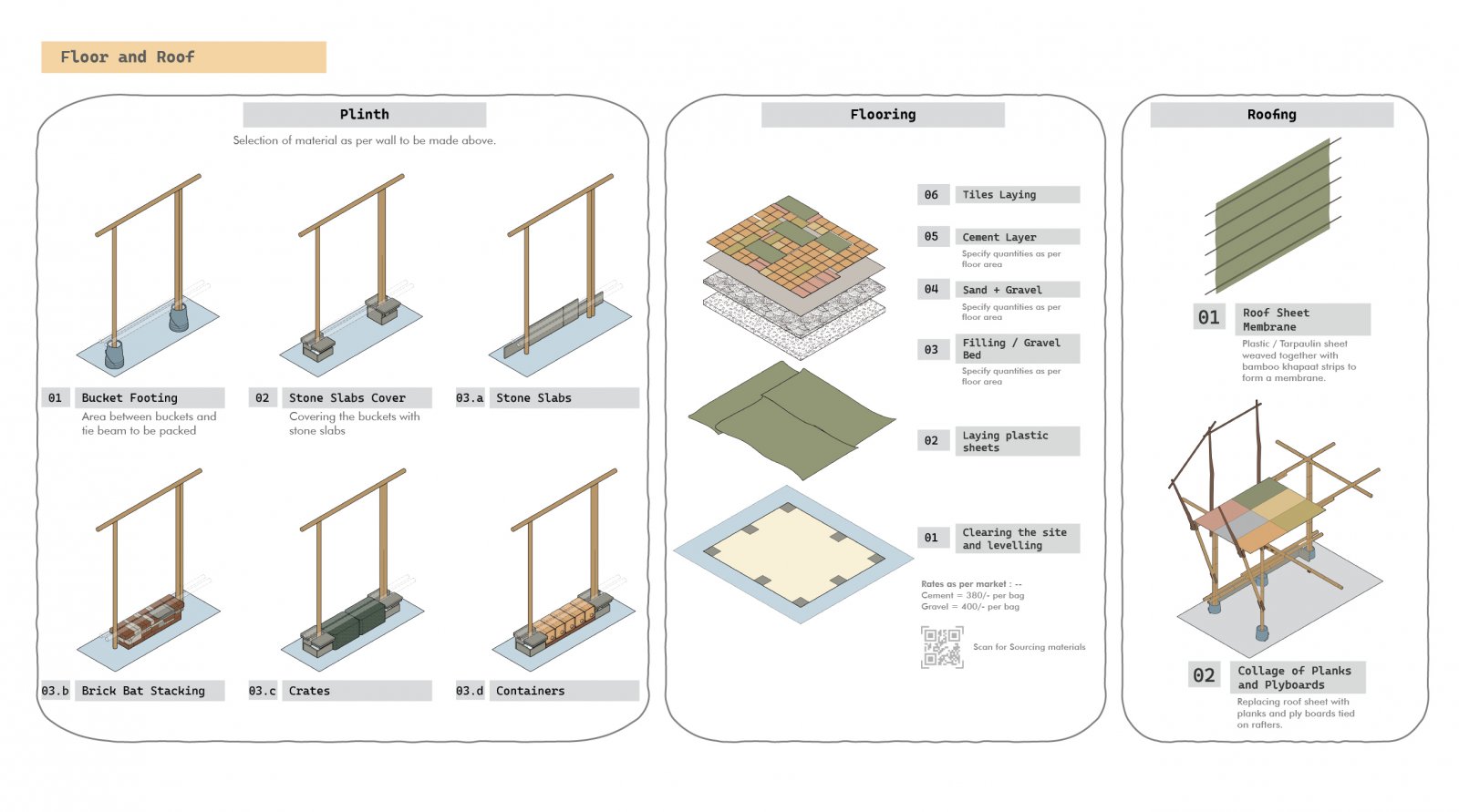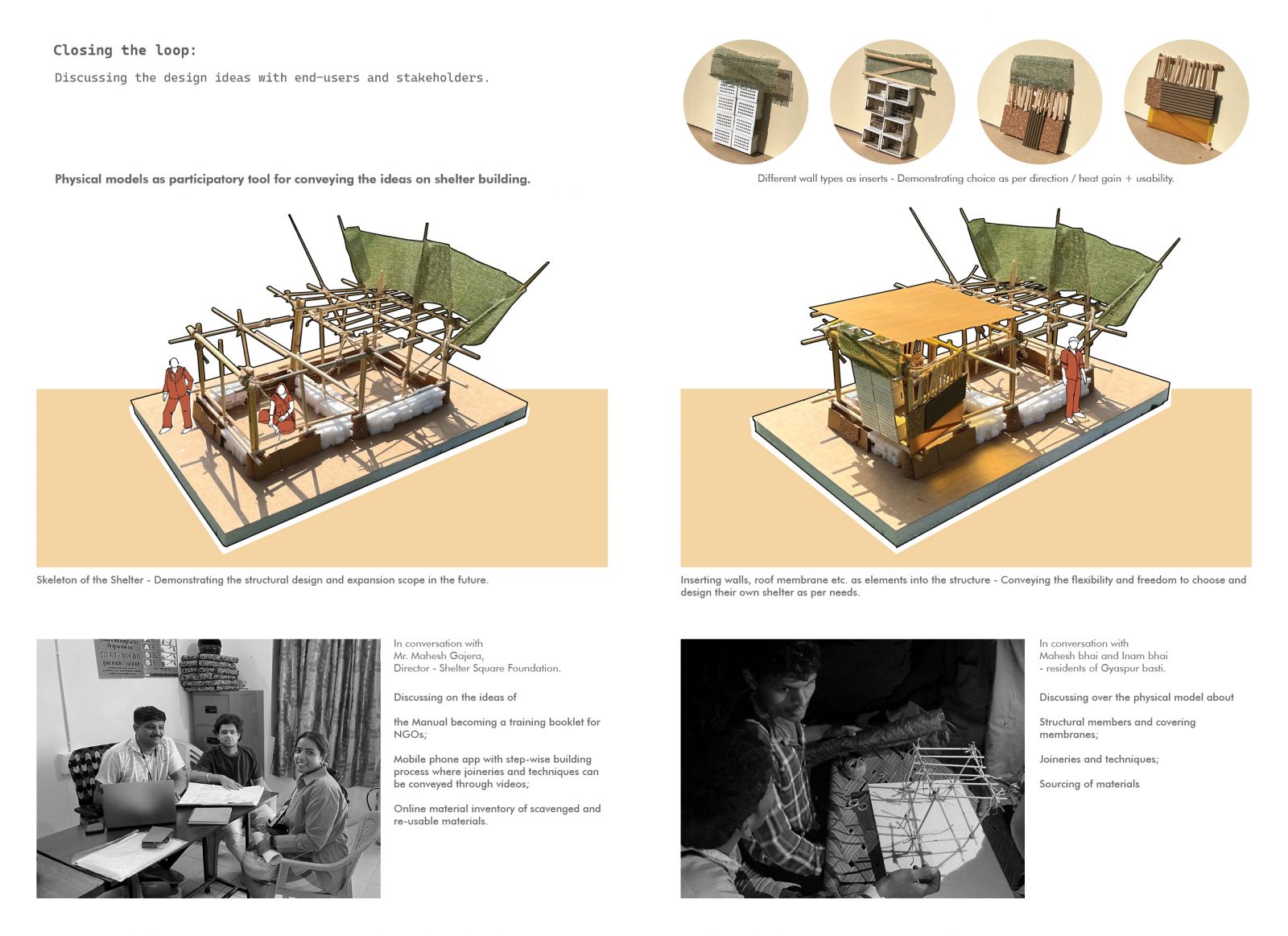Your browser is out-of-date!
For a richer surfing experience on our website, please update your browser. Update my browser now!
For a richer surfing experience on our website, please update your browser. Update my browser now!
Many migrant construction workers have been living in the seemingly temporary shelters of squatter settlements for the past 15–20 years.Why do such long-term residents continue to live in makeshift homes? Why are these settlements located along canals or on wastelands? Why are shelters built in this particular way, using specific materials? These questions sparked further inquiry into the nature of squatter settlements and ultimately led to the development of the D.I.Y. Shelter Manual. The design intends to empower migrant construction workers by enabling easier construction of shelters and enhancing living conditions within self-built squatter settlements. This is achieved through a building manual pamphlet that offers step-by-step guidelines to facilitate easier shelter construction. The manual is intended to support individuals both in building a shelter from scratch and in upgrading or expanding an existing one.
View Additional Work